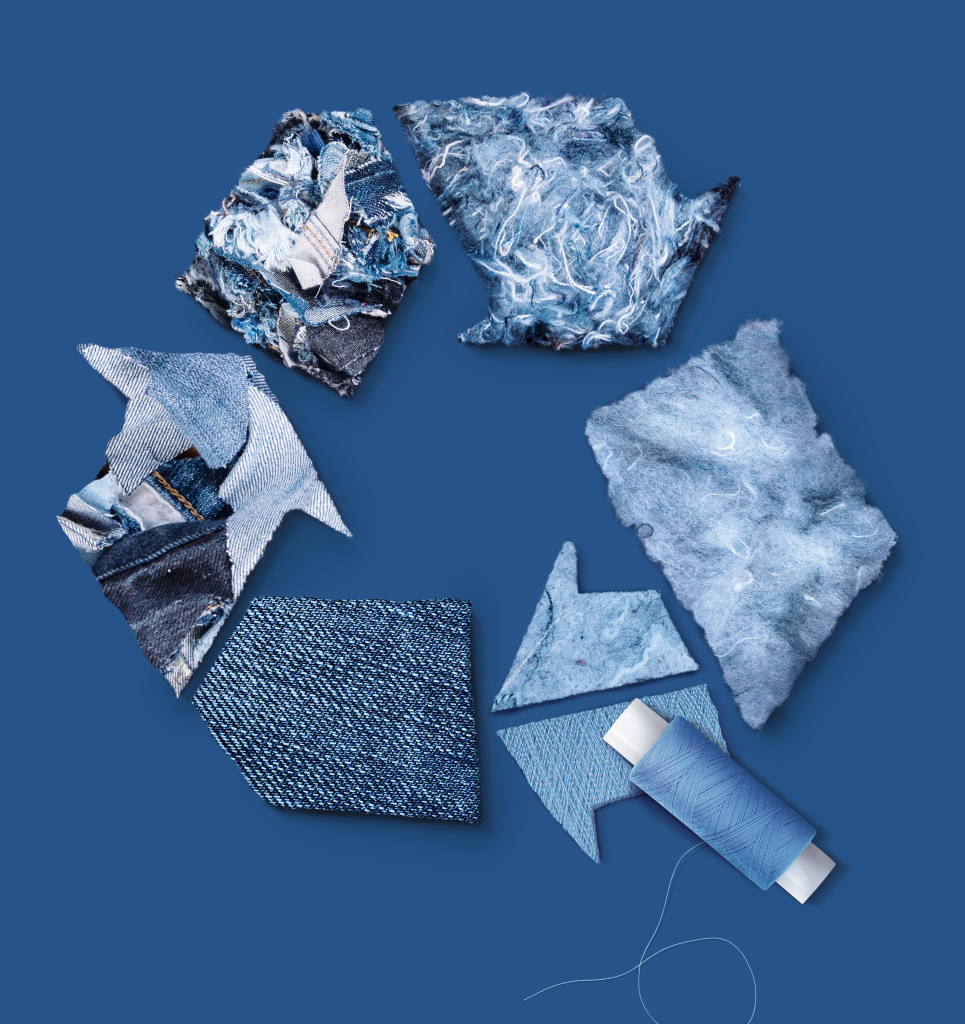Textile recycling is a vital component of creating a sustainable fashion industry, as it offers effective solutions to the growing problem of clothing waste. Every year, millions of textile items are thrown away, contributing to the alarming impact of fast fashion, which promotes overconsumption and environmental harm. Recycling old garments not only helps in reducing landfill waste but also diminishes the demand for new resources, supporting a circular economy. Through initiatives like take-back programs, brands can play an essential role in managing end-of-life textiles responsibly. As consumers become more environmentally conscious, the importance of textile recycling cannot be overstated in the quest for sustainable fashion.
The recycling of fabric materials represents a much-needed step towards enhancing sustainability within the clothing industry. Many garments, once deemed discarded, can be repurposed or transformed, minimizing their environmental footprint and maximizing resource efficiency. This practice aligns with the growing concern regarding clothing waste and the negative consequences of fast fashion, which accelerates the lifecycle of textiles. Alternative approaches, such as returning worn-out clothes to retailers through take-back strategies, further drive the conversation around ethical consumption. As we explore innovations in managing textile waste, the circular textile economy emerges as a promising solution to a pressing issue.
The Impact of Fast Fashion on Textile Waste
Fast fashion has revolutionized the clothing industry by introducing rapid production cycles, which allows consumers to enjoy trendy styles at a lower cost. However, this model is significantly contributing to an alarming increase in clothing waste. Each year, millions of garments are discarded, resulting in an overwhelming influx of textile waste that challenges our recycling systems. Many of these discarded clothes are poor quality, leading to shorter lifespans and ultimately contributing to the growing mountain of clothing waste in landfills.
Moreover, the throwaway culture fostered by fast fashion leads many consumers to dispose of their clothing rather than recycle or donate it. This behavior not only affects landfills but also strains our recycling processes, as textile collectors face increasing volumes of end-of-life textiles that are often unsuitable for reuse. The recycling infrastructure cannot keep pace with the demands created by fast fashion, and thus, far too many garments end up being incinerated or exported, exacerbating global environmental issues.
Understanding Textile Recycling Challenges
Textile recycling is a complex process hindered by several interconnected challenges. One major issue is the blending of different materials in clothing, such as polycotton fabrics. While recycling technologies have advanced, many facilities are still ill-equipped to handle mixed materials effectively. As a result, clothes that could potentially be recycled end up in landfills, contributing further to the waste crisis. Additionally, misconceptions about textile recycling often lead consumers to believe that donating less than perfect items will always benefit charity shops or recycling programs, when in reality, many items simply cannot be repurposed.
Furthermore, the economics of textile recycling are unfavorable. Many recyclers face financial burdens as the costs associated with collecting and processing used clothes often outweigh the profits from resale. This has led to a decline in the number of sorting facilities, making it harder for charities and communities to manage their textile waste responsibly. This situation underscores the urgent need for innovative solutions that streamline recycling processes and create viable markets for recycled textiles, ultimately fostering a more sustainable fashion economy.
The Role of Take-Back Programs in Sustainable Fashion
Take-back programs have emerged as a potential solution to the textile waste crisis, allowing consumers to return their used clothing to brands for recycling or resale. Companies like H&M and Zara promote these initiatives as part of their sustainability commitments. However, research has revealed that a significant portion of garments collected through these programs does not actually get recycled. Instead, they may be incinerated or sent overseas, contradicting the very purpose of these initiatives and creating skepticism among consumers about their effectiveness.
Educating consumers about the realities of take-back programs is essential for fostering true sustainability in the fashion industry. While these programs may seem like a responsible option, transparency in how donated items are processed is crucial. Brands that engage in genuine recycling practices can regain consumer trust and reinforce their commitment to sustainability. Furthermore, extending producer responsibility (EPR) policies could hold brands accountable for their products’ end-of-life disposal, which would ultimately lead to more circular fashion practices.
Charity Shops and the Crisis of End-of-Life Textiles
Charity shops have long served as a lifeline for unwanted clothing, providing a sustainable alternative to disposal. However, as the volume of end-of-life textiles increases, many charity shops are struggling to cope with the influx of damaged or unsellable items. Some have resorted to refusing donations of clothing that are torn or heavily worn, highlighting the disconnect between consumer goodwill and the harsh realities of clothing disposal. The costs associated with managing unwanted textiles can lead to financial strain, jeopardizing the viability of these charitable organizations.
The crisis facing charity shops also underscores a broader issue within the fashion industry. As consumers increasingly turn to fast fashion, the quality of clothing available for recycling diminishes, resulting in lower revenue from sales. Charity organizations find themselves unable to sustain profitable operations, leading to a vicious cycle that negatively impacts their ability to support important causes. To combat this, both consumers and retailers must work towards a more informed and sustainable approach to clothing disposal, focusing on quality and longevity instead of quantity.
Awareness and Consumer Responsibility in Textile Disposal
As consumers, awareness about the impact of our clothing choices is essential to addressing the growing issue of textile waste. Many people remain unaware of the consequences associated with fast fashion, believing that donating unwanted clothes is always a responsible choice. Educating individuals about the barriers to successful textile recycling and the reality of how most donations are handled can encourage more mindful choices around shopping and disposal. Taking responsibility for one’s clothing and understanding what happens at the end-of-life stage is pivotal for creating a sustainable fashion industry.
Moreover, proactive measures like participating in campaigns such as #TakeItBack may empower consumers to demand better practices from brands concerning their end-of-life impacts. By returning damaged or unsellable items to retailers, individuals are sending a message that they expect companies to take responsibility for their products, fostering accountability and transparency in fashion. Such collective actions will not only facilitate healthier practices but may also incentivize brands to innovate and invest in sustainable materials and genuine recycling solutions.
The Environmental Consequences of Clothing Waste
The environmental consequences of untamed clothing waste are staggering. Globally, fast fashion is responsible for a significant proportion of waste generation, leading to pollution, habitat destruction, and substantial carbon emissions. Each year, millions of tons of textiles are discarded, with a shocking percentage incinerated, thereby releasing harmful pollutants into the atmosphere. This underscores the critical need for a shift toward sustainable practices within the fashion industry and among consumers alike.
Additionally, the offshoring of textile waste to developing nations presents social and environmental inequalities that cannot be overlooked. Communities that receive these discarded clothing items often suffer from poor working conditions and environmental degradation as they cope with the influx of unwanted materials. This phenomenon not only perpetuates a cycle of waste colonialism but also highlights the urgent need to change our consumption habits, promote responsible recycling, and work toward a more equitable global economy.
Innovative Solutions for Sustainable Textile Management
To tackle the escalating textile waste crisis, innovative solutions must be developed that promote sustainable management of end-of-life textiles. Initiatives like fibre-to-fibre recycling offer exciting opportunities, converting worn-out materials into new fabric that can be used in fashion production. However, the technology and infrastructure to enable this process on a large scale remains limited, necessitating investment and collaboration across sectors, including fashion brands, recycling facilities, and government entities.
At the same time, alternative business models that prioritize durability and circularity, such as rental and subscription services, show promise in reducing waste. By rethinking the lifecycle of clothing, these models can help mitigate the environmental impact of fast fashion while creating a more sustainable economy. Encouraging consumers to embrace these alternatives requires a concerted effort from brands to change messaging and offer appealing options that fit within the context of modern lifestyles.
The Future of Sustainable Fashion Brands
The future of fashion lies in adopting sustainable practices that prioritize environmental responsibility and ethical production. Brands need to pivot towards transparency in their processes, ensuring that consumers understand the sustainability of their materials and practices. Building a stronger foundation for circular fashion requires brands to rethink their entire supply chain, from sourcing materials to managing end-of-life textiles, thereby minimizing their carbon footprint and social impact.
Additionally, engaging consumers in sustainable practices through loyalty programs or incentives can promote responsible consumption. When consumers feel connected to the brands they support, they are more likely to make informed choices about their purchases and disposal habits. Fashion brands must cultivate this relationship, emphasizing a shared commitment to sustainability and a vision for a more responsible industry.
Frequently Asked Questions
What is textile recycling and why is it important for sustainable fashion?
Textile recycling refers to the process of recovering fibers from old textiles to create new products. It is crucial for sustainable fashion as it helps reduce clothing waste, conserves resources, and minimizes the environmental impact of the fast fashion industry. By recycling textiles, we can prevent them from ending up in landfills or being incinerated, thus reducing pollution and promoting a circular economy.
How do clothing waste and textile recycling relate to the take-back programs offered by brands?
Clothing waste is a major issue, with many textiles ending up in landfills or incinerated because traditional disposal methods are becoming less viable. Take-back programs offered by brands like H&M and Zara aim to mitigate this by allowing consumers to return unwanted clothes for recycling. However, the effectiveness of these programs is debated, with many critics highlighting concerns over the actual recycling processes and the fate of returned items.
What is the impact of fast fashion on textile recycling efforts?
Fast fashion contributes significantly to clothing waste, as low-quality garments are quickly discarded after short use periods. This surge in textile waste complicates recycling efforts, as many fast fashion items are made from blends of materials that are difficult to recycle. Consequently, a large percentage of textiles collected for recycling are not actually processed sustainably, leading to increased landfill waste and rising emissions.
What should I do with end-of-life textiles if charity shops no longer accept them?
If charity shops are unable to accept your end-of-life textiles due to rising disposal costs, consider utilizing textile recycling facilities or local take-back programs. Additionally, you could explore upcycling projects or community initiatives aimed at recycling textiles sustainably. Participating in movements like #TakeItBack can also raise awareness about the need for brand accountability in dealing with clothing waste.
Are take-back programs for clothing genuinely sustainable or are they a form of greenwashing?
While take-back programs promote the idea of recycling and sustainability, evidence suggests that many simply redirect waste to incineration or landfilling instead of genuinely recycling the materials. Investigations have shown that a substantial portion of collected clothing is not processed sustainably, raising concerns about transparency and accountability in the fashion industry. It’s essential for consumers to demand clearer insights into what happens to their discarded clothing.
What role do consumers play in the textile recycling crisis?
Consumers play a crucial role in the textile recycling crisis by advocating for sustainable practices and holding brands accountable for their environmental impact. By participating in campaigns like #TakeItBack, individuals can push for more sustainable recycling options and better end-of-life solutions for textiles. Conscious consumerism encourages companies to improve their recycling processes and implement effective measures to reduce clothing waste.
How does extended producer responsibility (EPR) impact textile recycling?
Extended Producer Responsibility (EPR) holds manufacturers accountable for the entire lifecycle of their products, including post-consumer textile waste. EPR can significantly improve textile recycling by ensuring brands invest in systems that support recycling and waste management. This model fosters a sustainable approach to fashion, encouraging producers to design products that are easier to recycle and to take active roles in minimizing clothing waste.
What are the challenges faced by textile recyclers today?
Textile recyclers face numerous challenges, including increasing volumes of low-quality textiles from fast fashion, high processing costs, and limited recycling technologies. Many recyclers struggle financially, resulting in fewer facilities to manage the overwhelming amount of textile waste. Additionally, there is often a lack of clear channels for recycling various textile blends, further complicating sustainability efforts within the industry.
Why is it important to raise awareness about clothing waste and textile recycling?
Raising awareness about clothing waste and textile recycling is vital for fostering a culture of sustainability in fashion. As consumers become more informed about the environmental impacts of their clothing choices, they can make better decisions and advocate for systemic changes in the industry. Increased public awareness can drive demand for sustainable practices, pushing brands to improve their recycling efforts and minimize textile waste.
| Key Point | Details |
|---|---|
| Protest Against Retailers | Activist Wendy Ward returns worn-out clothing to retailers like Sainsbury’s, highlighting their lack of sustainable disposal options. |
| Problems with Charity Shops | Many charity shops no longer accept damaged textiles due to high disposal costs. Some end up incinerated instead of recycled. |
| Impact of Fast Fashion | Fast fashion leads to a saturation of low-quality clothing, contributing to increased textile waste and financial strain on charity shops. |
| Limited Recycling Options | Current recycling practices often lead to synthetic materials being incinerated rather than recycled into new fabrics. |
| Consumer Awareness | Campaigns like #TakeItBack raise awareness about the textile waste crisis and encourage consumers to challenge brands about their responsibility. |
| Need for Extended Producer Responsibility | Calls are increasing for policies that hold companies accountable for the end-of-life impact of their products. |
Summary
Textile recycling is becoming an increasingly critical issue as communities struggle to manage the waste generated by clothing, particularly from fast fashion. With limited viable disposal options and growing awareness among consumers, initiatives like #TakeItBack challenge retailers to take responsibility for their products beyond the point of sale. The increasing global textile waste crisis requires urgent action and systemic changes to create sustainable solutions for textile disposal and recycling.



